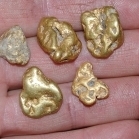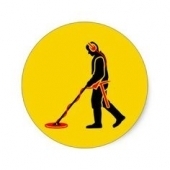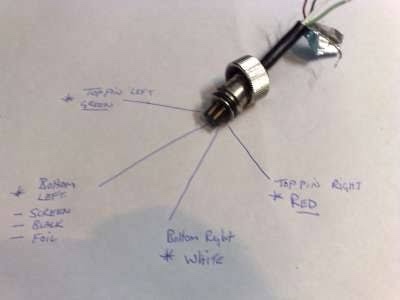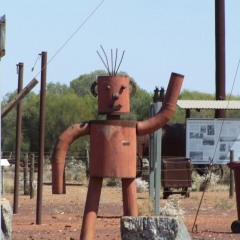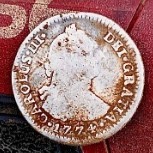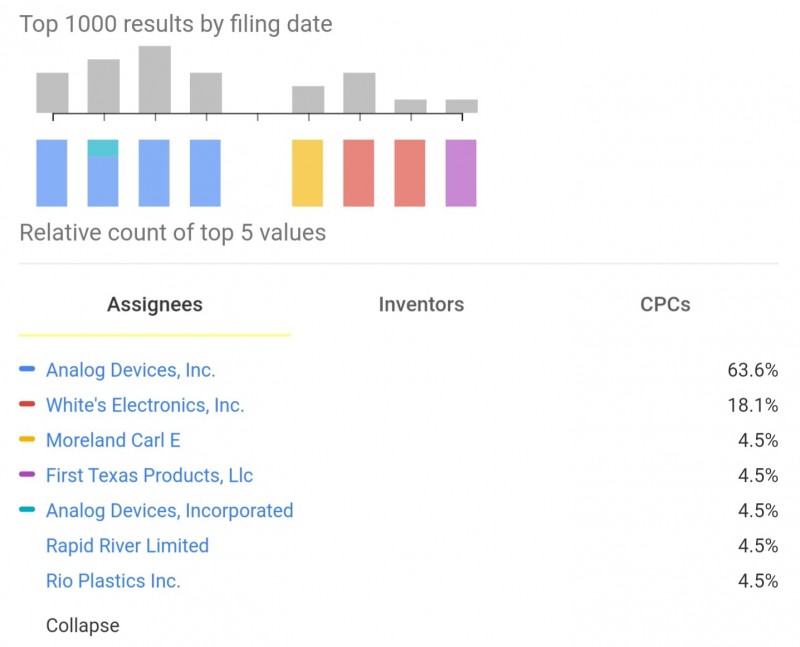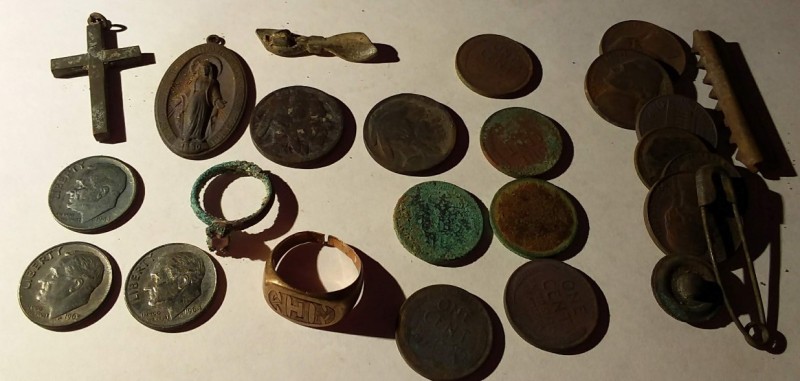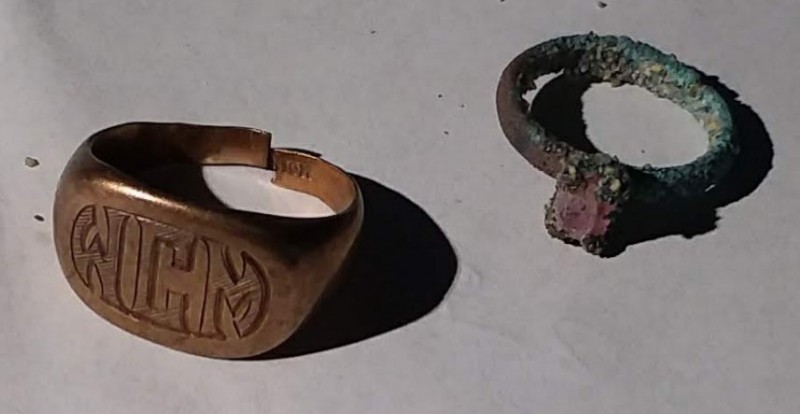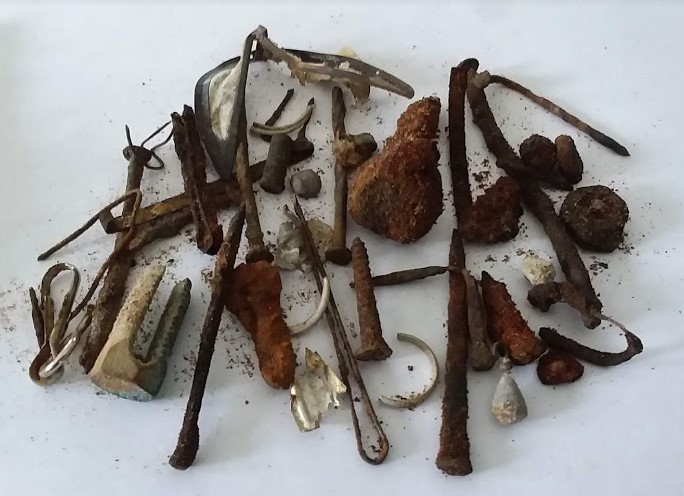Leaderboard
Popular Content
Showing content with the highest reputation on 04/10/2021 in all areas
-
20 points
-
So, I decided to try another beach to see if the conditions were the same to find silver. I spent about 2 hours there before I could not stand it anymore. For such an affluent town, the have the dirtiest beach I have ever detected on. The amount of junk targets and iron were overwhelming. I could not swing without hitting multiple targets. I got a bit of clad, and an 8-gauge shotgun shell casing, so I flew out of there. 🙄 The drive back to my favorite beach was now the goal to save the day. I wandered around for a bit with no luck, so back to the same area where I did good before. I expanded out a bit and the silvers turned to clad. Lots of dimes as expected, as they are hardest to find deep. Found a decent amount of silver. I did not take pictures of the trash, but here are all the good finds from that beach. My beach days are numbered, as the crowds are already starting to show up well in advance of Memorial Day opening. I may try another new beach next week for a bit and see what happens. Weather was beautiful…. The people ? - a bit strange. 😵10 points
-
After following EQ's progression I decided to buy the 800 hoping for a "simpler" detector than the GPX5000 which I sold. Part of that decision was based on one of Gerry's posts along the lines of "I've found more with a sub $1000 machine than all the more expensive ones ". My 1st time out proved to substantiate the claims made that the EQ will find small gold and larger as I found what I classify when dry washing as a -20 and found a 4.29 gram nugget! This while not fully understanding how to operate the detector! Using the "quick start' and owners full manual I was able to succeed. I hope there are some comprehensive videos out now that I can access?8 points
-
Thanks Gerry. Back home now. I ended up with a couple of ounces more than I left with, so covered costs at least: Largest piece was this stained 22 grammer in noisy tertiary ironstone conglomerate, a clear target signal: Find of the trip award goes to Reg Wilson for this 6 grammer, located at depth with a 4000 running "Normal" with "Bogene" settings: This 6 grammer from "Ravens Patch" Longbush near Moliagul was a personal favourite, especially as many consider the area well and truly "skun" Following the rains, mobilised soil salts rendered GPZ "Normal" timings all but unworkable, so my supply of sub grammers at depth dried up somewhat. At least digging deeper holes became a breeze, so not all bad :) Before that happened, I'm still blown away by actually hearing a half grammer at seven inches with a 22" coil, as well as a .1 grammer at 4"! Other people are now reporting similar extraordinary results using X CC's, with their favourite flogged patches also coming to life again: https://www.facebook.com/groups/35536563013442805 points
-
Test garden and general usage. First of all, I am not really into science experiments and exhaustive testing. I still have a day job, so my swing time is precious and I would rather get to it and find targets rather than spend countless hours collecting exhaustive data in test gardens and plastic boxes full of hot dirt. I appreciate the folks who are willing to do that and share the information with us but the fact is that the variables are many and unless all possible combinations of conditions, targets, detectors, coils, settings are tested, then I take all test information with a grain of salt for my situations and how I hunt and make general conclusions - I don't obsess over results because we are using a crude detection instrument in the first place and like I said, conclusions are suspect when you are only testing a miniscule subset of possible variabilities. That being said, I do have some reference non-ferrous targets that are intentionally placed near iron and iron that falses and I see a definite difference between FE and F2 in the way the target signal behaves and I prefer F2 because the signal seems more crisp, don't see any significant downside to running at the default F2 setting, so I mainly just leave it there, and really like how it cleans up all types of falsing iron from small nail heads to large pieces of flat iron. The falsing mitigation is stark and huge for me and is worth a lot more than worrying about the extreme low probablity of masking that might ever occur. Let's talk about potential downsides to using iron bias - It doesn't do what it says it does - makes iffy iron targets or falsing iron targets sound "more ferrous". I kind of felt that way on FE - felt it wasn't worth the trip vs. the possible downside of "masking" or whatever you want to call it. F2 - completely different ball game. As far as I am concerned, ML can do away with FE now that they have F2 but that would probably cause much consternation to folks who have convinced themselves that FE is better. Turns a non-ferrous target into a ferrous target - Never seen this happen. I don't think I have ever dug a target with the Equinox that I thought was 100% ferrous that turned out to be non-ferrous. There are iffy targets, to be sure (even with F2 engaged). But if F2 shifts a falsing or iffy target to full ferrous, it IS full ferrous in my experience. I have played with F2 on or off in the field and haven't run into the situation yet (see below for corollary). Masking of non-ferrous targets - This is a hard one to prove outside of controlled conditions. I can see how this might happen in theory - IB is a filter that takes some finite signal processing time, so it IS possible it could affect recovery or the ability to separate targets (e.g., perhaps a recovery of 6 turns into 5.5 when IB is engaged to max effect - making these numbers up for the purpose of illustration). My personal experience tends to counter this theory. I have dug plenty of iffy signals that turned out to be mixed ferrous and non-ferrous targets in the hole simultaneously or turned out to be purely non-ferrous. And rarely I have pulled a huge ferrous target and have subsequently found a non-ferrous on a subsequent scan. What I can't tell you is whether that target would have been masked regardless of the F2 setting. However, I don't recall an occasion where I have ever engaged F2 on a falsing ferrous target to make it sound 100% ferrous, dug the ferrous target and found a non-ferrous. If I ever did do that, that might be a case for F2 "causing" masking. I have not encountered it but I have also not dug 100% of all 100% ferrous targets indicated with F2 engaged. So my experience says it is rare but not impossible. To be frank - I would worry more about whether I am covering every inch of ground with my coil than the whether F2 could ever mask a target. I am generally pragmatic, play the odds in my favor (or take chance out the equation - i.e., dig everything that beeps). Bottom Line: I simply like how F2 mitigates ferrous falsing, genuinely notice it's absence when I am working single frequency, and simply don't lose sleep over any potential downsides because I think they are insignificant IMO. Cheers4 points
-
Quote...."How can the limited depth of VLF's deal with this heavy mulch layer in these placer/load mine dumps in the forest?" VLF detectors are good for depth in low to medium mineral soil/rock so the mulch will not effect or depth but if it is 50 mm deep then you will be that much further away from your target. Note PI have a loss of sensitivity on small or pin head size gold bits but high frequency VLF are very good. Read what is on this forum about the gold monster 1000 and put multiple size lead bits at a lot different depths to get to know what the size and depth the gold monster 1000 can get. I hope this is a starting point of getting gold but the location that you are detecting in has a big factor on a person success in find gold.4 points
-
- and an SDC as well Trent. One coil type does it all? Hopefully, I'm going to trial a 26" Z DOD spiral soon on deep, unpushed big gold ground,, just to compare results with the 22" Z CC.4 points
-
They may only have a few available and went by the previous list. Your number may still be called. But e mailing them may be a better option. If you are still interested, let them know it.4 points
-
I live in Northern Idaho (Moscow) and bought a gold monster 1000. I can't really complain that it is hard to find gold, as I was warned by the Chris Ralph Fists Full of Gold book to not invest in a metal detector right away without prospecting experience. Frankly it was a bit of an impulse buy as the activity just looked like so much fun, and I read books you can detect outside of the desert I really want to make it work. I haven't had any luck so far despite being out roughly ten times. Went out for the first time this season to a placer mine dump. This time of year there is still snow in the mountains and the rivers and creeks are overflowing with snowmelt. So I think it is better to wait for awhile before hitting creeks and streams and just target old gold mines which have mine dumps. To research I use the site https://www.idahogeology.org/webmap to give me specific gps coordinates. I also use sites like thediggings.com to see if there is any mining activity in the area to make sure I don't go on someone's claim, but also that the area is known to have some gold. I haven't been able to find too many guys doing detecting in a heavily wooded area with a VLF. Which makes sense because VLF's can't get through the mulch and heavy vegetation layer. Today I went to a lode mine dump and although there were huge piles of dirt I wondered if I would be able to detect any missed nuggets in there unless I was to get the bottom of that huge pile as the heaviness of gold would sink to the bottom. My question is about the application of VLF's in heavily wooded areas. Is it limited to Creeks and Streams? How can the limited depth of VLF's deal with this heavy mulch layer in these placer/load mine dumps in the forest? I'm also curious if my approach is really bad in general. Thanks.3 points
-
With the Orx in that area? Best chance of finding gold with easy access is working newly exposed (drywashed) stretches of caliche in wash bottoms at 30kHz or higher on the GSSN claims. Might as well try the GPAA and MPA claims too if there is new digging there exposing runs of open caliche. Pains me to say since I do not personally agree with clubs, nor does the law recognize purely recreational use as a valid reason to stake a claim, but the clubs have pretty much everything easy access claimed up out there and they leave all their holes open, so your dad would have an easy time detecting them versus other areas. Most the gold is 0.15 grams or smaller. With a VLF you want to be able to hit stuff around 0.05 grams as that's the stuff people often miss there, so practice with a tiny test nugget. And the ground can be hot on a VLF. So the key is learn how to stay ground balanced and tell the difference between target sounds and hot rocks, and go slow and keep the coil to the ground so you can hear the tiny stuff. Try to find stretches people haven't detected already, probably 5-10% of what you will see walking around out there is unhit, or not very well detected. So consider that 9 out 10 stretches of caliche you try will have already been detected, as a rule of thumb. What I'm saying here is: be patient, believe the gold is there somewhere, and keep at it even when you want to stop. Every time I've gone to those claims with a club member to help them learn to find gold, I've succeeded. The key really is to learn how to hear the very tiny stuff, as most people out there seem to just pass it over. I've found stretches with 15 or 20 tiny little pickers with my GB2 that a member swore he had detected and found nothing on. There are some stretches of caliche out there which can produce a little picker every couple feet, and some with a picker every 15 to 30 feet. If you go more with no finds, then it's likely to be previously worked with hand brooms in the depression or someone already detected it, so the key is to look for very recently exposed caliche where the gravels they dug show no signs of disturbing back in the 1930's. The last part requires a very keen eye for subtle layering and gradiational changes in caliche coatings on the gravel with depth - even most drywashers out there struggle to make this observation and end up often working old disturbed gravels without knowing it and those stretches of exposed but previously worked caliche produce very little.3 points
-
6 - When I say I use the default, I mean I use the default. I have been impressed where ML has set the defaults on Equinox and I honestly don't stray much from them in any search mode other than to set sensitivity appropriately and the number of tones to my liking (usually 50 when relic hunting, 5 at the beach or in a park), perhaps a tweak to recovery speed a tad to calm things down (meaning I usually increase recovery ABOVE the default) and ensure I always noise cancel and do an auto Ground Balance. I either have a Gold Mode program or a single frequency variant of the mode I am searching with stored in the Custom Profile slot to enable quick target interrogation - single frequency target interrogation is where I really notice the comparative IB "ON"/"OFF" target response. I personally do not think IB = 0 in either FE or F2 mode turns IB completely off when using Multi IQ - it simply minimizes the effect - so if you really want to know what the minimally filtered and processed target signal sounds like, you have to go to single frequency. But that's really neither here nor there, I suppose.3 points
-
Thanks. It's really getting harder to sneak out any silver there. It just involves slowing down and digging more. As for the trashed beach, I'll hit it again when there is a really low tide. This is an old beach, older than my good beach. It's regularly hit by a lot of detectorists and I'm sure they just dig the absolute good signals. I know a lot of Excal's and EQ's have hit it. Not sure about any other brands, but they definitely cherry pick it. Makes it hard to search for the deep targets there. I'm definitely happy for the silvers I found at the good beach, just a bit disappointed that I could not try my method on this beach. It has the potential for Seated coins. If I lived closer, I would clean out sections and go for the deep ones. Thanks. I'm very happy I did get a bunch of silvers. There are days early in the season, that I could not even find 1 silver. It's funny how things work out sometimes. I guess that is what draws us back to the beach every season. You really never know what you are going to find, no matter how well you plan it out. The beach decides what you get 😄3 points
-
Northern Idaho has good gold to detect. Hit the creeks where bedrock is exposed, hit the hillsides in the vacinity of old workings. The monster will work very well in heavily wooded regions in Northern Idaho. Contact Idaho Geological survey and get as much publications from them as you can on the placer and hard rock production journals as you can. Also my book will talk alot about detecting in heavily wooded mountains. The gold is there and the monster is capable of finding it.3 points
-
Got a couple beaches here that are similar so I use my Multi Kruzer on them. Go insane with the pi. Sacrifice depth for sanity i guess. Looks like you did pretty well anyways 🙂3 points
-
3 points
-
That’s a couple great posts Chase, we think much alike, and I have a similar attitude about getting too deep in the weeds. Despite all the tech, I will still lean on a good location, and getting my coil over the target. Sometimes we make it sound like metal detecting is rocket science, but my reality to this day still looks a lot like beep-dig! Lots of people really question and obsess over updates. But my training from prototype testing basically says “update good, load ASAP” and get on with it. The only question usually then is how to improve on that update... not on how to go backwards. If an update comes out, I wait just a couple days, then I load it up, learn it, and move on. People sometimes forget the engineers actually are genuinely trying to make our lives better, and a lot of work goes into an update to make the detector better. They’d never release an update, unless they really believed it made the machine better at what it does. I work with these people, and I do trust that they are a million times smarter than I when it comes to this stuff. That trust tends to make me more comfortable just grabbing the latest updates I guess, as it really surprised me that anyone would feel differently about them. No detector is ever truly 100% done, and this ability to keep tweaking and tuning after release is one of the best things to ever happen in the industry. Twenty years ago, the only way to get any update was buy the next model, because that’s where all updates went In this industry, for a long time, the first genuine new model was often a finished prototype, and it was always the follow up model that was best tuned and tweaked. I saw this for ages with a Minelab in particular and still do. You can bet second generation Multi-IQ is to die for. Equinox just proved it has potential, and now the real work begins. Same with GPZ 7000. Just proving ZVT works. The next gen will be what we were really waiting for. That’s still the pattern but updates help smooth the process, and keep the first time efforts a little safer for purchasers. I feel way more comfortable getting something hot off the press if I know it can be updated. Knowing what I know now, I’ll not get another detector unless it can be updated. The cutting edge is too complex, and the chances of new machines getting to market and needing updates just too great. If the machine does not have an update facility, they won’t even be trying, and in fact are more prone to play down faults. A company with a good update facility has less to fear from a major bug, that would have the other company doing a recall. Lotta blah blah blah to say I always thought original FE was deficient, and F2 is just what it should have been all along. That’s the power of being able to update.2 points
-
A quick search has yielded a document that tells where the placer gold is in Utah. https://geology.utah.gov/popular/general-geology/rocks-and-minerals/utah-gold/utahs-gold-placers/ Another thought might be some places North of Las Vegas on US 95. The suggestion about meeting up with Lunk would be a good one if you can travel that far south of Las Vegas but you need to decide quickly as Lunk will be in Northern Nevada soon. Good luck.2 points
-
Steve, Welcome to the forum and don't get discouraged yet, there are many experienced people on here that will be able to help you with your questions and detector. I am also new at detecting and am learning how to detect for gold. For now I have some lead sinkers, pellets, and buck shot to learn with. I am learning the tones and VID numbers that go with them. I also picked up some small nuggets from a couple of people here so I know just how small I can find the pieces in a clean area. Slowly but surely I am getting better with my detector and plan to hit up some of our local creeks that I have found some gold in while panning for gold. I am sure that you will get plenty of advice here, but it may take time for the right people to see your post. Good luck and happy hunting.2 points
-
I've tested, No performance gain due to the small amount cut off....18 inches a VLF and if I remember correct a subject over on (Findmall) Technology forum many years ago ....... Only gain I have found ....... less chance of the cable moving or exposure to the conditions, with I have tried several different things, one was running the coil cable thru the shaft.. .. and exact length needed. (both pictured) I love going thru and reading the old Findmall post with Eric, Wire Chief, Mr Bill, Reg...etc.. The capacitance and the resistance of the coil cable has to be taken into consideration as a total value of the coil.Depending on the exact particulars, chopping off a lot of cable would change the way the electronics looks at the coil. Adding length would affect it also.Now in reality I have chopped fairly good sized amounts off of cables in order to permanently pole mount the electronics box. The need to get rid of excess cable length was there. I have not noticed a drop off in performance, although it could happen depending on the unit.Mr. Bill Re: Coil Cable - straight or spiralled? Frank Hamill Date: August 19, 2002 08:43AM One addition thing. In the other two PI's I owned in the water the currents of the ocean along with swinging against the resistance of the water cause the coil wire to move...when the coil wire would move the units would give target signals which were not there. After Terry told me about running the wire straight up it still moved in the currents. So I split malt straws and put them one by one around the straight up coil wire and taped them lightly...Falsing of that "type" stopped. A users answer to the problem. However this coil on the Goldquest SS does not need the straws as you put the connection next to the rod connection and straight up is no problem as the distance between the rod and the connection is mere nothing. On my other PI's the distance between connection and rod was several inches and allowed the movement of the coil which caused falsing. From a users standpoint who goes in the water this is a great feature that is needed to be put into coils that are used underwater. Thank you again....Frank Coil Cable - straight or spiralled? Eric Foster Date: August 19, 2002 04:19AM Hi Frank and Larry, Good to hear reports of the units performing well. There are always some surprises that come back from the field, though. Why running the coil wire straight up the pole rather than spiralled around, should make a difference to the field pattern has me puzzled. One of the properties of coax cable is that there is no external field generated by the cable. Does winding the cable clockwise give a different result to it being anti-clockwise? How is this change in field pattern manifested? Do other detectors show this problem? Eric. Re: Shorter coil cable question. Eric Foster Date: May 10, 2005 05:34PM Hi Tommy, Shouldn't affect it at all, as the capacitance of the coil/cable circuit will be reduced. Eric.2 points
-
2 points
-
2 points
-
The GPX 6000 is a new gold prospecting metal detector from Minelab. The Minelab GPX 6000 is a pulse induction (PI) gold nugget detector, featuring a lightweight, well-balanced, rainproof package, coil options, built in wireless headphone capability, and quick release Li-Ion rechargeable batteries. See the specifications below for details. The Minelab GPX 6000 is powered by the all new GeoSense-PITM technology, which analyzes and responds to ground signals with great clarity and precision. Now you can detect difficult environments once thought undetectable. GeoSense-PITM technology rapidly suppresses unwanted signals via three overlapping feedback systems for superfast detection of all gold pieces. The GPX 6000 has three search coils available, an 11" round mono, a 17" elliptical mono, and a 14" round DD coil. The coils are not compatible with other GPX coils, having an entirely different connector. The Minelab GPX 6000 will be packaged with different coils in different regions. The Africa model will come with the 11" mono and 17" elliptical coils, plus two batteries. The U.S. model will instead include the 11" mono and 14" DD coils, and a single battery. Mains and DC charging adapters are included, as well as the new Minelab ML 100 wireless headphones. NEW! - Minelab GPX 6000 Video Training Series Minelab GPX 6000 gold nugget detector MINELAB GPX 6000 FEATURES POWERED BY GeoSense-PITM - GeoSense-PITM technology quickly and precisely analyzes gold signals buried in the ground, so you'll be able to ear all gold pieces clearly and accurately. FIND ALL GOLD - Built by the world leader in metal detection technology, Minelab's GPX 6000TM is the fastest, lightest and simplest way to find all types of gold in one machine - from tiny pieces of gold to that elusive 'retirement' nugget. EASY EXPERT - With automatic features and an easy-to-use interface, you'll be an expert at finding gold from the moment you turn on your GPX 6000TM. Because Automatic Ground Balance continuously adapts to changing soil conditions as you swing your detector over the ground, there's no need to adjust any settings. Finding gold has never been easier. LIGHTER SWING - The GPX 6000TM weighs only 2.1 kg (4.6 lbs) with the 11" mono coil and 2.3 kg (5.1 lbs) with the 14" DD coil. The GPX 6000TM features light carbon fiber shafts, streamlined control box, and signature U-FlexTM armrest - detect longer and feel comfortable doing it. With a Li-Ion quick-release rechargeable battery supplied, you can detect for up to 8 hours on a single charge. BUILT TO LAST - Tested in the harsh environments of the Australian outback, the GPX 6000TM can withstand extreme heat and heavy rains. A 3 year warranty is included, backed by Minelab's global support. CHOICE OF COILS - The GPX 6000TM includes a versatile 11" Monoloop coil for tight spaces and pinpointing tiny gold pieces, and a large 14" Double-D coil to detect gold accurately even in salty environments (both coils waterproof to 1 m / 3.3'). LOUD AND CLEAR AUDIO - Whether listening to the 'loud and clear' external speaker or the supplied wireless Bluetooth headphones, you'll never miss out on the sound of gold with the GPX 6000TM. MINELAB GPX 6000 SPECIFICATIONS Search Modes / Ground Type - Difficult (Default) / Normal Double-D Modes - EMI Cancel (Default) / Conductive Ground Cancel Ground Balance - Auto / Manual (Quick-Trak) Noise Cancel - Auto Sensitivity - Manual (Levels 1-10) / Auto (Level 11) /Auto+ (Level 12) Threshold Tone - On / Off Volume - 5 Levels Length Extended - 145 cm / 57 inches Length Collapsed - 76 cm / 30 inches Weight - 2.1 kg / 4.6 lbs (with 11" mono coil) Display - Monochrome LCD with Backlight (Low, Med, High, Off) Audio Output - In-built Speaker / Wired 3.5mm (1/8") Headphone Jack Wireless - Bluetooth aptX Low Latency Supplied Headphones - ML 100 Wireless Headphone Supplied Battery - Quick Release Li-Ion Battery, 5833 mAH Chargers - AC Mains Charger & 12V Battery Clip Cable Included Battery Runtime - Approximately 8 Hours Supplied Search Coils - GPX11 11" Round Mono & GPX14 14" Round DD Optional Search Coils - GPX17 17" Elliptical Mono Waterproof - Coils Submersible to 1 meter / 3.3 feet and Detector Splash / Rain Proof Key Technologies - GeoSense PITM / Bluetooth / aptX Low Latency Minelab GPX 6000 User Manual Minelab GPX 6000 Accessories & Spare Parts Minelab GPX 6000 Video Training Series Minelab Metal Detector Forum Note: Minelabs GPX 6000 features three coil options: the GPX11 11" monoloop coil for versatile gold hunting, the GPX14 14" Double-D coil to detect gold accurately even in salty environments, and the GPX17 17" elliptical coil, to find large gold nuggets at greater depth. All coils are waterproof to 1 meter (3 feet). Early information indicates the Africa model will come with the 11" mono and 17" elliptical coils, while the U.S. model will instead include the 11" round mono and 14" round DD coils. Minelab GPX 6000 control summary Bluetooth® Control Enables Bluetooth® for connection of wireless headphones - Initiates Bluetooth® pairing mode for connecting Bluetooth® headphones (long press for at least 2.5 seconds). Backlight Adjust Cycles through the backlight brightness settings - High, medium, low and off Power On/Off - Turns the detector on and off - Restores factory default settings (press and hold from off for at least 7 seconds). Sensitivity Adjust - Adjusts the sensitivity level. Ground Type - Toggles between Difficult and Normal Ground Type. Toggles between the Threshold On / Off settings (long press for at least 2.5 seconds). Noise Cancel - Initiates the Noise Cancel process. When a Double‑D coil is connected, toggles between the Double‑D Modes — EMI Cancel and Conductive Ground Cancel (long press for at least 2.5 seconds). Volume Adjust - Adjusts the audio Volume Level. Quick‑Trak - Press and hold Quick‑Trak Ground Balance to conduct a Ground Balancing operation. Minelab GPX 6000 relative performance Minelab GPX 6000 control closeup1 point
-
Reports of the Mineralogist for the state of California. It seems fake news has been around for a long time. https://books.google.com/books?output=text&id=13POAAAAMAAJ&q=217#v=onepage&q&f=false1 point
-
Find free downloads of her state placer location books thanks to Steve H.: https://www.detectorprospector.com/files/category/15-free-books/1 point
-
1 point
-
I have now done 2 short tests separation tests, namely 3D separation test and Monte performance nailboard test to compare the Iron bias FE and F2 settings. In the first test-in the deep separation test, the nail is at a distance of 20 cm from the coin .. and Equinox is set in Program Park 2 at recovery speed 7. The first test / 3D test / shows that equinox did quite well with the separation also on the setting of Iron Bias F2 -9 max .... which is a really good result .... while in my opinion the setting of Iron Bias FE is a safe setting somewhere at the level FE1-2 max ... and a higher setting of FE than 2 is already significantly signed on the significantly reduced 3D separation .... However, this test evaluates only one of the two separation situations in detection well ..... I can now say that in another second test of the 2D surface separation type "Monte performance Nailboard Test" it will show how high we can move the Iron Bias F2 setting without so that we do not strongly limit the separation properties of the detector in this type of separation ... I also did this test .. but tomorrow I will repeat it in daylight and load it from Gopro..and you will see the differences in the individual settings ..1 point
-
1 point
-
It’s great you want to take your Dad out. My adult son and I are planning some times like that together, but I am the one who is going to show him how as its a more recent thing for me and he’s never been. Northern Az has some good areas 3 hours from St. George like Gold Basin, but not knowing the area will require a lot of walking to be successful I would think. If you want to really be able to find some, why not set up a tour with one of the pro’s in the area? Lunk and Rob’s, and some other pros here offer gold prospecting classes in Az. Just a thought.1 point
-
1 point
-
Oneguy doesn't have any problems finding the big ones! He has proved that. He knows what he is doing. Congrats Scott.1 point
-
What were you using to find those small pieces? Great job and good luck on your next hunt.1 point
-
1 point
-
Seem to be varying results on the link posted James. The Nic Mac bloke reckons it was no deeeper on his test patch and had less depth then the 14” on a 1/2 ouncer. Seems to be pinging a good amount of prickly bits in tricky ground, turning the 7000 into a 6000 🤔😉1 point
-
1 point
-
1 point
-
Excellent find! On your first trip. Plenty of videos, but filtering out the helpful ones may take some work. Best bet is this forum under the gold prospecting section.1 point
-
1 point
-
1 point
-
The anvil can be handy. Gave a small one like that to a long time family friend who is a silver smith. Worth cleaning them up.1 point
-
Thnx Dog,i like both of youre mentioned choices. Kinda leanin towards simplex as waterproof but,may yet go with nox600. Thnx for reply an encouragement. Im good with constructive criticism also. Lol 1 time long ago i had an ol capn that was in fact an old an really good experienced capn but as i was new aboard id heard stories of how many were intimidated by his cussin an hollerin 🤣 well even back then i knew for a fact that cussin an hollerin do have their usefulness. So me being the direct straight forward kinda guy i am and to remove any unnecessary confusion in height of battle on weather deck while shortening up , i approached him one on one and just explained,Plz do not concern yourself with scaring or intimidating me,cuss scream,call me whatever you like,just do it in a clear concise manner,so i know wtf your sayin🤣 We became close friends👍👍1 point
-
If the above comments are accurate, It is a situation in which I am not pleased at the way Fisher has utilized the marketing information I sent them. I sent the President of FTP a strong email protesting their pestering “declined” customers with emails etc. Imagine my embarrassment when I found the cause of the mess.... I just figured out what the hell happened. MY BAD. I kept a neat list, all you prospective and committed customers, plus a list of those who had been on the list and declined later, plus all the buyers All neat on my iPad in “Numbers” the iOS spreadsheet. I just looked at what Fisher actually got. My spreadsheet converted to an incomprehensible list of Excel spreadsheets with all the data scrambled. MY apologies to anyone who has been inconvenienced. I will also have to apologize to the President of First Texas who I just sent a stiff email to!!!!! I do wish however that they had sent me an explanation of what they intended to do going forward.1 point
-
I think the 10x5 is going to be worth the wait, so hang in there relicmeister. Hopefully, I'll have a few hundred swings with it under my belt come this time next week and I can report on it.1 point
-
It wasn't a big deal at first, but now I am getting unsolicited text and emails even after I already said no and that just left a really bad taste in my mouth because of the way my personal info provided to Rick is now being used by FT. Not a good look for Rick or FT. Thought Rick should know so he could at least minimize any blowback on his end. It's all just business as far as Arturo is concerned...I suppose. They could have at least thrown in a free hat or backpack as part of the deal to make you feel better about the privilege of buying a semi-finished design prototype.1 point
-
I have chopped off about 12” of my TDIBH cable.......no problems at all.1 point
-
Here in Oz they taste like Mutton Bird, very fatty. "Adult short-tailed shearwaters, or 'mutton birds', fly halfway around the globe to hatch and raise a single chick each year in colonies across southern Australia, returning to the same sandy burrow every spring."1 point
-
Jeez! It seems like a not so deep exposed trough with a rip too. It all depends on ground hardness there. Pay attention to those almost invisible cuts..............Better to call them edges.......Good luck1 point
-
And I think this is it. The area is only 20 feet x 40 feet that has been giving targets and its like there is a line that you cross and all goes quiet. I detected in all directions and with this being soft sand I was able to scrub the sand so could see where I had detected and not missed much. I will just have to keep an eye on it for now for any more changes. This little area has treated me well!! Good Luck to All1 point
-
Hi Folks Yep it's old kiwigold back again. (Trev from New Zealand) some of you may remember me from days gone by. 73 years old now. Had a dose of throat cancer diagnosed late last year, 30 treatments of radiation seems to have sorted that out. And my prognosis is good. After a long absence from chasing gold have decided to get back into it. Ha ha one last fling lol. Before the body gets to tired or my back craps out. Small scale I must admit. No more underwater dredging for me. I will be working the banks for mainly fine gold. Have put together a system utilizing a mid western prospectors dry land suction nozzle. Now down to a two and a half inch suction nozzle. Guess I won't be shifting much eh. But at least everything is a lot lighter than what I used to use. And I don't expect to make a fortune. More of a paying hobby if I am lucky. Will flick some pics up, when I get on the river and everything running. Now back to the Subject heading. A guy here in NZ got hold of me, wanting two ounces of as pure as he can get beach gold, not pure as in purity,but not contaminated with to much black sand. Now I don't do beach mining any more, that was years ago. Like about 20. But I have a mate who still does. And maybe able to help. But we all amalgamate our concentrate. End up with a blob of gold sponge, which we then melt. Now somewhere years back on one of the gold forums. I recall seeing a mention of how to convert gold sponge back into free running gold. It may have been, soak in lemon juice or vinegar for a while. But not sure on that. My memory ain't what it used to be. So can anybody assist who knows of the method or knows someone that does. I have attached a pic of some gold sponge I had. Sadly I turned that into a little blob of melted gold. A whole .58 of a gram. Yahoo I'm rich. So I can't experiment with it. Good to be back. Although I do read the forum from time to time, haven't posted for several years. Cheers Trev in New Zealand.1 point
-
Very well stated; similar experience for me ... 1984-1985 = first used detector, I had rented it from a shop, found it too stressful .. did find some rings and a watch, but too hit-miss for my tastes, and back then wasn't into gadgets. Nugget Hunter: Dredging, in my opinion is superior to every method including metal detecting unless you're in a known nugget producing area with the right detector with the right GB set and right settings and know how to use it proficiently as if it were your hand ... then okay, detecting is the edge, otherwise it's suction dredging, but not with a 1.5 inch hose unless sniping is all you've got opportunity to do. 4" minimum for me. But really, it depends on the location and situation (e.g., if you can get to the prime areas in the location) BTW ... I didn't get back into detecting until 2012. In 2013 both of my detectors were stolen. Took me about 3 years to deal with that loss not just the theft but unable to go out and do it/ lost opportunities ... still is a sore issue for me. Not until 2015 did I replace one but really, not till last year did I get into it fully committed. Looking back I do wish I'd given the detector a better chance but lacked the patience.1 point
-
This is one of those pictures say it all things. Bottom line - nearly twice the target id resolution as the X-Terra 705 (50 versus 28 segments), with each segment independently notchable (a new word definition?). Personally I think this is a good compromise between resolution and target id stability. The target IDs range from -9 to 40 arranged in an arc for better on screen visibility. The arc is divided into what I am calling"zones" (my term - I don't know what if anything Minelab calls them) for easier identification. When you notch in and out the segment will flash and the target id number will display so no worries knowing where you are.1 point



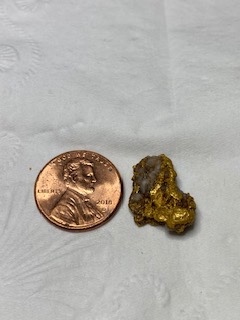
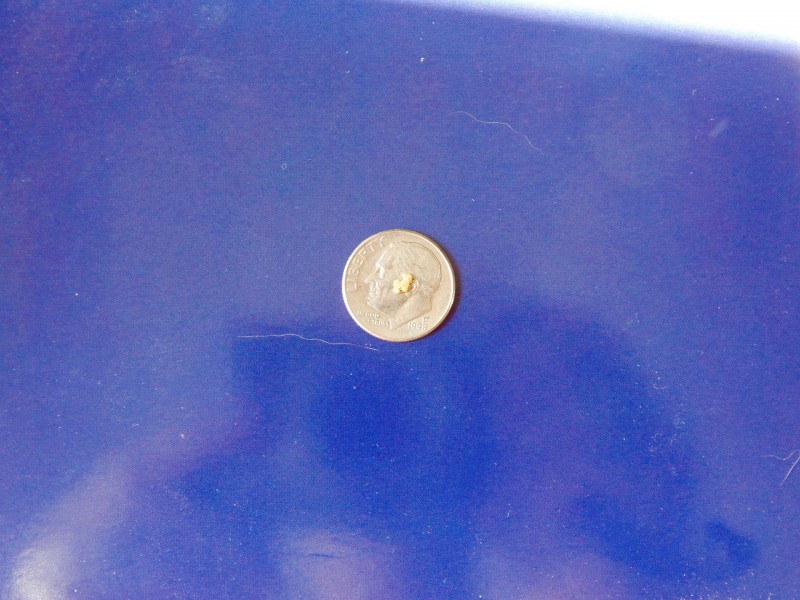
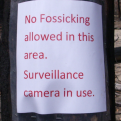




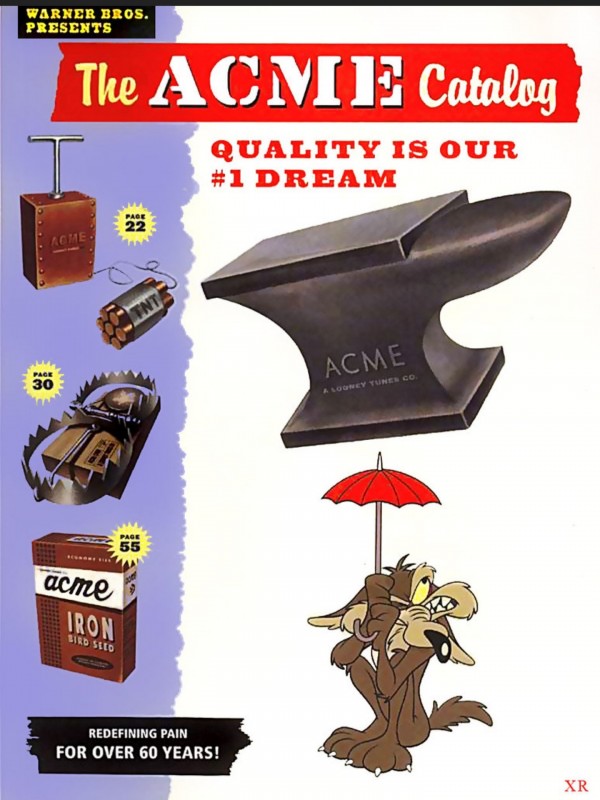

.thumb.jpg.95344db3aeef0a4c6c73420daa366191.jpg)
.thumb.jpg.d71314a45f3dc82bf75ac1b96e7e9201.jpg)
.thumb.jpg.1a9549fb0b800f862cb4f1ba5be06930.jpg)
.jpg.014e33d6cdda985cfe75ad3dcba7dc05.jpg)
